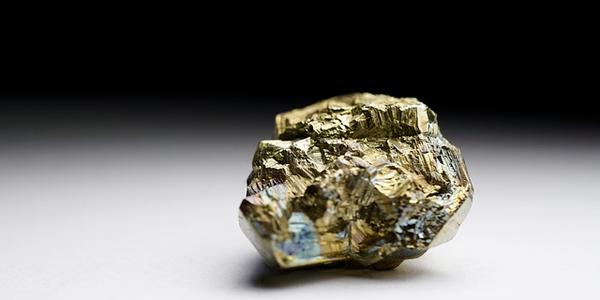Researchers have demonstrated a striking phenomenon: frozen discs of ice can move across a carefully designed metal surface by themselves, guided by engineered patterns. This discovery, reported in a recent paper in ACS Applied Materials & Interfaces, builds on a sequence of prior explorations from the Virginia Tech lab of mechanical engineer Jonathan Boreyko. The work takes the familiar Leidenfrost effect—the cushion of vapor that forms beneath a liquid droplet on a very hot surface—and extends it into a new regime where ice, rather than liquid water, interacts with a structured solid to produce directed motion. In essence, the researchers have engineered a “three-phase,” movement-driven process that converts melting of ice into a directional propulsion across a patterned plate. This breakthrough deepens our understanding of how phase changes, surface chemistry, and geometric design can combine to generate controlled motion without external energy inputs.
Section 1: Foundational science and the leap from droplets to discs
In the study of heat transfer and interfacial phenomena, the Leidenfrost effect stands as a classic demonstration of how extreme thermal conditions can alter the behavior of a liquid on a hot surface. Traditionally, when a droplet of liquid meets a surface heated well above the liquid’s boiling point, a vapor layer forms beneath the droplet, insulating it from the surface and allowing it to glide or “levitate” with surprising mobility. The temperature threshold for this levitation depends on the liquid in question and the characteristics of the substrate, but for water on a typical hot surface, levitation occurs once the surface is hot enough to sustain a robust vapor cushion. Researchers have long used this effect to study levitation dynamics, vapor flow, and the interplay between surface tension and fluid motion.
Boreyko’s group previously demonstrated a three-phase Leidenfrost phenomenon using water vapor, liquid water, and ice. In that configuration, rather than a droplet bouncing above a vapor cushion, a thin ice disc interacts with a heated, conductive substrate in a way that involves a thin meltwater layer beneath the disc. The core insight was that at sufficiently high temperatures, the meltwater can form a flow regime beneath the ice that resembles a controlled, self-sustained layer, albeit with a narrow range of conditions under which the ice can transition from a submerged, boiling regime to a regime where the meltwater’s behavior governs motion. This line of inquiry set the stage for exploring how a solid ice disc could participate in a directional, self-propelled movement when placed on a specially prepared surface.
A key aspect of the broader Leidenfrost framework is the need for a strong temperature differential across the meltwater layer that exists between the bottom of the ice disc and the interface with the substrate. In the ice-on-hot-metal experiments, the bottom of the meltwater is exposed to intense heating and tends to boil vigorously, while the portion of meltwater that remains in contact with the underside of the ice disc experiences a comparatively cooler condition. This creates a vertical gradient in temperature and a horizontal gradient in vapor or liquid flow that can, under the right circumstances, translate into a horizontal thrust or propulsion force on the ice disc. The interplay of these forces, surface conditions, and temperature controls determines whether the ice disc remains pinned, slides, or propels itself in a given direction.
The researchers emphasize that working with ice introduces a different set of thermophysical parameters compared with liquid droplets. Ice has a higher density and distinct thermal conductivity compared with water, and the phase transition dynamics at the ice–water–air interfaces involve different latent heat considerations. As the ice melts, the evolving geometry of the meltwater sheet or rivulet beneath the disc becomes a central driver of motion. The discovery of a directionally guided movement mechanism for ice, rather than simply a levitated or dispersed liquid droplet, marks a meaningful shift in how researchers conceptualize self-propelling systems that are driven by melting and interfacial flows.
Section 2: Experimental design and the engineered surface
To explore the directional motion of ice discs, Boreyko’s team prepared ice discs by freezing distilled water in thermally insulated polycarbonate Petri dishes. The bottom-up freezing technique minimizes air entrapment and yields relatively uniform ice discs, which are essential for reproducible experiments when studying motion that arises from surface interactions. Once the discs are prepared, the team places them on an engineered aluminum surface whose surface has been deliberately patterned to direct the flow of meltwater and, by extension, the movement of the disc itself.
The heart of the experimental apparatus lies in the herringbone pattern milled into uncoated aluminum plates. These channels are asymmetric and arrowhead-shaped, designed to bias the flow of meltwater in a preferred direction. The plates are then bonded to hot plates that can be set to precise temperatures corresponding to the desired thermal regime for the ice-disc experiments. The ice discs are placed on these plates using rubber tongs, and researchers capture the motion with cameras from multiple angles to obtain a thorough view of how the discs behave under various conditions.
The role of the surface patterning cannot be overstated. The herringbone geometry acts like directional tubing on a river: it channels and constrains the flow of the liquid phase that develops as the ice melts. The analogy helps to illustrate how the flow beneath the ice creates a drag and thrust on the disc, steering its trajectory across the surface. In contrast to simply having a flat, featureless plate, the patterned surface provides an engineered “grip” on the meltwater, translating the latent energy changes tied to melting into macroscopic motion. This deliberate structuring represents a deliberate departure from conventional surface engineering, where uniformity is often pursued to minimize friction or to promote even heat transfer. Here, the pattern is a functional feature that stores energy in the form of directed flow and converts it into mechanical motion of the solid ice.
Subsections and clarifications:
- Preparation of ice discs: The laboratories used distilled water and controlled freezing environments to produce discs with clean, low-bubble interiors. The goal was to minimize heterogeneous nucleation sites and ensure consistent melting behavior under the experimental temperatures.
- Surface assembly: The aluminum plates with herringbone channels are bonded to heated bases, enabling precise control over the local surface temperature. This temperature control is critical because the rate of melting, the thickness of the meltwater layer, and the viscosity of the meltwater near the ice–water interface depend sensitively on temperature.
- Observation framework: Researchers documented the dynamics with multi-angle video, enabling a detailed analysis of the formation of meltwater pools beneath the discs, the onset of motion, and eventual termination when conditions no longer sustained directed propulsion.
Section 3: The directional mechanism and the role of melting
The central phenomenon the team explores is not merely melting, but melting that occurs in a constrained, patterned environment in which surface geometry and fluid dynamics couple to produce directional movement. When ice sits on a hot, patterned aluminum surface, a thin layer of meltwater forms between the underside of the ice and the plate. The heat input continues to melt the solid, creating a continuous, thin liquid layer. The bottom of this meltwater tends to boil due to heat transfer from the plate, generating vapor; meanwhile, the portion of meltwater immediate to the ice’s contact surface remains in contact with the ice, forming a delicate thermal boundary.
The herringbone channels disrupt symmetric flow and create asymmetry in the meltwater’s distribution as the ice melts. This asymmetry results in differential surface tension and pressure forces, which act to push the ice forward in a coordinated way. The researchers emphasize that the phenomenon does not rely on levitation or boiling in the same sense as a classic Leidenfrost droplet. Instead, the system operates on a more “viscous” analog of the Leidenfrost effect, where the driving factor is the interplay of melting, directional channeling of water, and interfacial forces rather than vapor cushions or sustained levitation.
A key insight comes from comparing the uncoated surface with a surface that has been water-repellent treated. On the bare herringbone-patterned surface, ice discs moved in a manner consistent with the baseline mechanism described above. However, when researchers coated the aluminum channels with a hydrophobic spray, they observed a markedly different dynamic. The ice discs initially adhered to the coated surface, then, after a period, suddenly “slung” forward across the plate. This slingshot behavior underscores the sensitivity of the propulsion mechanism to the precise boundary conditions at the meltwater–surface interface.
The physics behind this accelerated motion on the coated surface involves how the hydrophobic coating alters water’s behavior within the channels. Because the coating makes water less willing to wet the surface, the meltwater tends to bead up and sit on top of the channels rather than flow smoothly through them. The result is the formation of a single, elongated puddle ahead of the melting ice. The ice disc tends to settle toward the central region of this large puddle, and the evolution of the puddle’s shape and curvature creates a mismatch in surface tension forces that can become sufficiently large to overcome the adhesion between the ice and the surface. When this mismatch reaches a threshold, the ice disc is abruptly released and propelled forward along the channel. This two-stage dynamic—initial sticking followed by a rapid release—highlights how subtle changes to surface chemistry can drastically alter the propulsion mechanism.
The team’s qualitative and quantitative analyses reinforce a general principle: propulsion in this system is governed by how the meltwater moves and how the surface geometry channels that movement. In the uncoated scenario, the meltwater’s flow beneath the ice is guided forward by the channel geometry, producing a sustained, steady propulsion. In the hydrophobic scenario, the reduced wetting encourages an alternate flow regime that builds up forward, asymmetric tension, culminating in a discharge-like, high-velocity leap of the ice disc. The comparison between these two regimes emphasizes the potential to tune the motion not just by altering temperatures but by engineering the interfacial properties of the surface.
Section 4: Observations, performance, and repeatability
Across a matrix of experiments, the researchers observed robust, repeatable directional movement of ice discs on patterned surfaces under controlled temperature conditions. The ice discs demonstrated a consistent tendency to follow the directionality encoded by the herringbone channels, provided the meltwater dynamics remained within the regime that encouraged forward propulsion. The velocity and trajectory of the ice discs varied with the plate temperature, the ice disc size, and the precise geometry of the channel patterns, but the core phenomenon—directed motion driven by melting on a patterned surface—remained reproducible.
Video documentation captured not only the slow, deliberate gliding of the ice but also moments of rapid acceleration where the discs appeared to leap along the plate after the boundary conditions shifted. The presence of the hydrophobic coating introduced a qualitatively different dynamic, with an initial sticking phase that could last several moments before the disc suddenly accelerated. This bifurcation in behavior underscores how the same physical system can exhibit multiple dynamical regimes depending on subtle changes in surface treatment and ambient temperature.
In addition to qualitative observations, the researchers explored the concept of using patterned movement for practical energy applications. One proposed direction involves creating a circular pattern on the metal surface so that the melting ice disc would undergo continuous rotation. By placing magnets on the disc, the rotation could potentially generate electrical energy through magnetic induction, or be coupled to a turbine or gear system to harvest energy. While these ideas are speculative at this stage, they illustrate the broader potential of translating a fundamental physics phenomenon into functional components for energy systems.
Another area of interest concerns defrosting and heat management. The team highlighted the possibility of employing a herringbone surface to facilitate partial melting of frost on heat exchangers or in cooling systems, thereby enabling faster removal of surface ice with lower energy cost than fully melting ice. This “partial melting” strategy could allow the system to leverage directional melt flows to dislodge ice more efficiently, reducing the energy input required to achieve clear surfaces. The researchers noted that this approach could lead to significant heating savings, potentially reducing energy demands by more than tenfold in certain frost-control contexts, compared with approaches that require complete phase change from ice to liquid water.
The experimental setup also emphasized that the practical application of these findings would require careful consideration of scale effects, material properties, and environmental conditions. While the ice discs used in laboratory demonstrations provide a clear proof of concept, translating the phenomenon to industrially relevant scales entails addressing challenges such as robust patterning over larger areas, maintaining precise temperature control across surfaces, and preventing wear or fouling of the microchannel architecture over extended cycles of melting and movement. The ongoing research aims to map out the parameter space—temperature, pattern geometry, surface chemistry, and disc dimensions—to identify regions where the propulsion remains efficient, repeatable, and controllable.
Section 5: Inspiration from Death Valley and the sailing stones analogy
The researchers drew a compelling analogy between their engineered system and the long-standing geomorphological mystery of Death Valley’s Racetrack Playa, where large, watermelon-sized boulders appear to drift slowly across a dry lake bed, leaving trails in cracked mud as they move. The phenomenon, first studied in earnest around 2014 after decades of curiosity, involves ice rafts that form on meltwater pools in the playa when temperatures rise and the lake bed becomes intermittently wet. In wind-driven conditions, these ice rafts can be pushed and guided by the wind, producing a slow, directional drift that has intrigued scientists for generations. The new experiments reinterpret this natural wonder through the lens of engineered control rather than relying on unpredictable wind or external energy sources.
Johns Hopkins University’s Ralph Lorenz was among the scientists involved in the Racetrack Playa investigation. He and his colleagues initially anticipated a relatively simple outcome when they began their experiments in 2011; however, the eventual discovery that wind forces acting on water-ice interfaces can move large rocks gave new life to interpretations of how wind, water, and ice can collaborate to create coherent motion on a planetary scale. Boreyko and his team reflect on this inspiration, noting that science progresses through linking observational curiosities to practical demonstrations of how materials and surfaces can be designed to produce desired outcomes. The Death Valley example serves as a conceptual touchstone, illustrating how dynamic interactions among ice, water, wind, and a pliant surface can result in persistent motion under specific environmental conditions. The researchers’ aim, in part, was to translate that same spirit of curiosity into a controllable, repeatable laboratory system in which motion can be induced without external energy inputs such as wind or fans.
As Boreyko explained, the central question was not about recreating the exact Death Valley process, but about asking whether a similar directional movement could be realized in an artificial setting where the key variables—melting dynamics, interfacial flows, and surface geometry—could be manipulated to produce spontaneous motion of ice. The answer, based on their experiments, is affirmative: by combining a carefully designed surface with precise temperature control, it is possible to coax ice discs to move in a preferred direction as they melt. The Death Valley inspiration thus functions as a narrative bridge between a famous natural phenomenon and a modern, engineered system that leverages phase-change physics to generate motion without external forcing.
Section 6: Applications, potential impacts, and future directions
One of the most intriguing implications of this line of research lies in its potential for energy harvesting and passive actuation. The idea of turning a melting ice disc into a rotating mechanism by placing magnets on the disc or using a circular pattern to induce rotation opens a pathway to creating simple, low-energy generators. The concept, while still in early stages, envisions a micro-scale or mesoscale generator in which the directional melting flow coupled with magnetic induction yields electricity or mechanical power. The modular nature of the herringbone pattern offers a design space for exploring different geometries and integrating energy-transducing elements such as magnets or small turbines directly onto or near the moving disc. This could lead to compact, scalable energy-harvesting devices that operate in environments where traditional power sources are impractical or unavailable.
Beyond energy harvesting, there is a strong case for improved defrosting and frost management in industrial settings. The researchers suggest that the directional meltwater flows could facilitate faster removal of frost or ice from critical surfaces, such as those found in heat exchangers or cooling systems. If partial melting can be harnessed to generate motion or detachment of ice more efficiently than complete melting, facilities could realize substantial energy savings. The basic idea is to capitalize on the physics of melting-driven flow to produce targeted, accelerated ice removal without the need to raise temperatures uniformly across an entire surface. The potential payoff includes reduced energy expenditure for defrosting, shorter downtime for maintenance, and improved reliability of thermal systems.
However, practical adoption requires careful examination of several variables. Scaling the patterned surface to industrial dimensions requires robust manufacturing methods for durable channels that maintain their geometry under repetitive heating cycles. The interactions between ice discs and real-world materials—such as metals with different thermal conductivities, coatings with varying durability, and ambient environmental conditions—need systematic characterization. In addition, long-term reliability studies will be essential to determine how repeated melting, refreezing, and surface wear affect the propulsion mechanism. The research team emphasizes that the primary goal is not a single application but a broader understanding of how to exploit directional melting flows for practical uses. The ultimate value may lie in a suite of applications that leverage the same fundamental physics rather than a single, predefined use case.
Future research directions include exploring alternative surface designs that could direct movement even more efficiently, such as concentric or spiraled channel patterns that encourage continuous rotation. Investigations into material choices beyond aluminum—potentially including composites or coated metals with tailored thermal properties—could expand the operating temperature windows and durability. Another avenue is to study the interplay of disc size, meltwater viscosity, and channel geometry to identify optimum configurations for specific tasks, whether that involves energy generation, ice removal, or other functional outcomes. Finally, researchers may consider integrating active temperature control systems with passively patterned surfaces to create hybrid devices that switch between different motion modes under controlled triggers. This would enable more flexible, programmable behavior in a range of operating environments.
Section 7: Broader implications, limitations, and path to real-world use
While the experiments offer compelling demonstrations of directed ice motion driven by surface patterning and melting dynamics, many practical concerns remain on the path to real-world deployment. One major limitation is the ambient dependence of the phenomenon. The ordered motion relies on precise temperature control and a stable, well-defined patterned surface. In field conditions, fluctuations in ambient temperature, humidity, and airflow could disrupt the delicate balance that enables consistent propulsion. Addressing this will require robust control strategies, perhaps combining passive patterning with active temperature management to keep the system within its optimal regime.
Another consideration is material durability. Repeated cycles of heating and melting expose the surface to thermal stresses that could degrade the channel geometry over time. For industrial applications, engineers would need to identify materials and coatings that resist wear and fouling while maintaining the required hydrophobic or hydrophilic properties as needed. Additionally, scaling the patterning process to large surfaces or complex geometries must be technically and economically feasible, which may involve advances in manufacturing and quality assurance.
Despite these challenges, the potential benefits remain compelling. If engineers can translate the principle into reliable, scalable devices, the approach could complement or even replace certain energy-intensive processes that currently rely on uniform heating for ice removal or surface treatment. The concept highlights how a deep understanding of phase-change physics, interfacial chemistry, and micro-scale geometry can yield new tools for managing heat and materials in ways that were not previously considered. As a field, this area invites interdisciplinary collaboration among physicists, materials scientists, mechanical engineers, and energy systems specialists to explore practical translations of an elegant laboratory phenomenon into real-world solutions.
Conclusion
The discovery of self-propelled ice discs gliding along engineered, patterned metal surfaces represents a notable advance in the study of phase-change physics, interfacial dynamics, and surface engineering. By combining a three-phase melting regime with a deliberately designed herringbone channel geometry, researchers have created a system in which ice motion is directed, amplified, and, under certain conditions, abruptly accelerated. The work echoes the age-old question of how natural phenomena—such as the drifting stones of Death Valley—can inspire innovative engineering solutions that operate at human scales. It also opens a spectrum of possible applications, from energy harvesting concepts that leverage melt-driven propulsion to more efficient methods for defrosting or frost management in industrial settings.
As with any pioneering research, the path to practical deployment will require further exploration of durability, scalability, and reliability across diverse operating environments. The researchers acknowledge that the most exciting outcomes may emerge downstream, from a curiosity-driven observation to a purposeful application that integrates engineered surfaces with phase-change dynamics to deliver measurable benefits in energy efficiency and material processing. In the meantime, the study enriches our understanding of how melts, surfaces, and shapes can work together to convert subtle physical processes into tangible motion, offering a fresh perspective on how to approach problems of heat, ice, and flow in both science and engineering.




